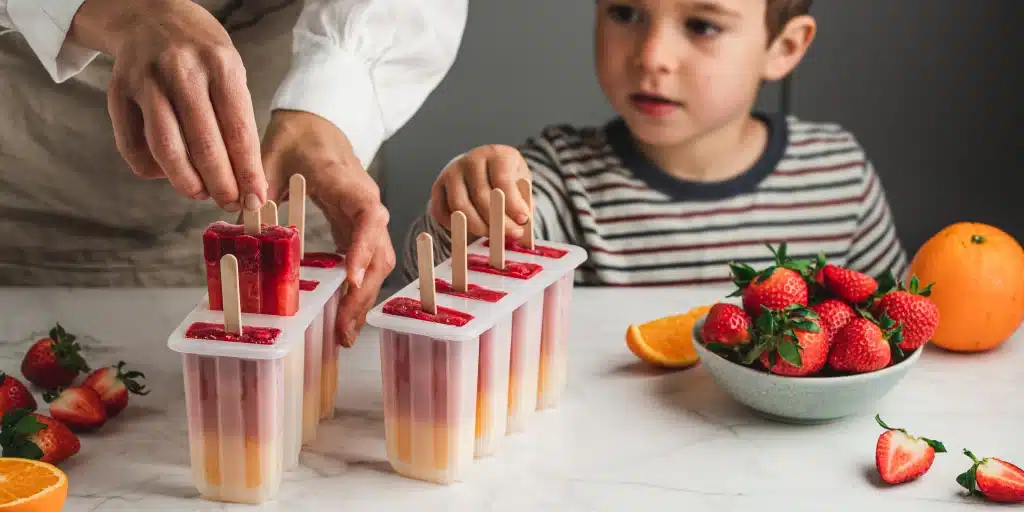Creating family traditions is an important part of childhood memories and bonding experiences.
However, coming up with fresh, engaging activities year after year can be a challenge.
This blog post provides fun and creative activities, starting with the letter “Y,” to incorporate into your yearly traditions.
From crafting things with yarn and yellow play dough to exploring yummy snacks and games like yo-yo, these activities are perfect for preschoolers and young children.
They promote learning and development and create cherished moments of laughter and joy.
Get ready to kickstart new yearly traditions your little ones will always love.
Fun Activities: Things that Start with Y
1. Yarn Art Projects

Unleashing creativity through yarn art is an excellent way to involve young minds while teaching them about the letter Y.
These hands-on activities foster fine skills and pattern recognition, providing little ones a canvas to explore their artistic talents.
Instructions
- Gather yarn in various colors and textures.
- Select a sturdy base like cardboard or thick paper.
- Lightly sketch the letter Y or desired shape on the base.
- Apply glue and press yarn strands onto the glued areas to secure.
- Let your child experiment with colors and lengths for unique designs.
- Allow the artwork to dry completely before displaying or adding decorations
When the fun is over, store the yarn neatly for future use and clean up any stray strands to maintain a tidy workspace.
With a little guidance and plenty of creativity, yarn art can become a beloved yearly tradition that sparks joy and learning.
2. Yellow Play Dough Y’s
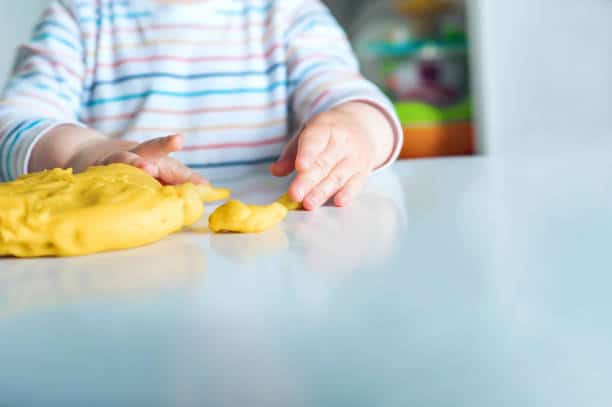
Sensory play and alphabet recognition go hand-in-hand with this enjoyable activity involving homemade yellow play dough. It stimulates a child’s senses and fine skills and reinforces the shape and sound of the letter Y, promoting early literacy development.
Instructions
- Combine 2 cups flour, 1 cup salt, 2 tbsp cream of tartar, 2 tbsp vegetable oil, 2 cups water, and a few drops of yellow food coloring.
- Mix flour, salt, and cream of tartar in a saucepan; slowly add water while stirring.
- Cook over medium heat until dough forms a ball; remove from heat.
- Knead in oil and food coloring until smooth and pliable.
- Let kids roll, pinch, and mold the dough into the letter Y.
- Encourage creativity by making the letter in various sizes and styles.
- Enjoy imaginative play with the homemade play dough.
For added fun, you can provide cookie cutters or stencils to trace the letter shape.
When playtime is over, store the yellow play dough in an airtight container or resealable plastic bag to keep it soft and fresh for future use.
If the dough becomes too dry or crumbly, gently knead in a small amount of water.
Proper cleanup is essential, so wipe down surfaces and wash your hands thoroughly to remove any residual dough or coloring.
3. Crafting the Letter Y
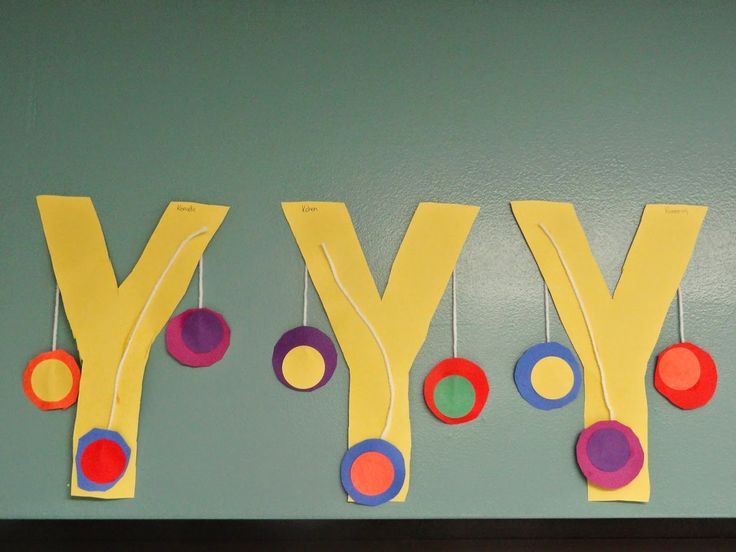
Crafting with the letter Y is an enjoyable way to foster creativity and improve skills in young children.
This hands-on activity allows little ones to explore various materials while reinforcing letter recognition and having fun.
Instructions
- Trace and cut a large letter Y from cardboard or heavy paper as the base.
- Decorate the Y with glue and yarn strands for texture or patterns.
- Crumple and glue tissue paper squares for a colorful, textured effect, or paint the letter.
- Add extra decorations like glitter, beads, or fabric scraps for more creativity
The possibilities are endless, and the creation process will foster a sense of accomplishment and pride in your child.
Once the craft is complete, display it proudly in your home or classroom.
It will remind you of the joy and learning that took place.
4. Yellow Scavenger Hunt

Embarking on a yellow scavenger hunt is an excellent way to develop observational skills and reinforce color recognition in children.
This interactive game promotes learning and motivates physical activity and teamwork.
Preparation
- Step 1: Create a list of yellow items commonly found around the house or classroom, such as a banana, a rubber duck, or a pencil.
- Step 2: Gather and strategically place the items around the designated play area.
- Step 3: Provide each child with a basket or bag to collect their findings.
Conducting the Hunt
- Step 1: Explain the rules: children must search for and collect the yellow items on the list.
- Step 2: Encourage teamwork by allowing children to work in pairs or small groups.
- Step 3: Guide them by providing clues or hints if needed, but let them explore and discover independently.
- Step 4: Celebrate each discovery and encourage them to share their findings with others.
After the hunt, discuss the items they found, reinforcing their names and colors. You can also incorporate educational themes such as shapes, counting, or categorizing the items based on their properties.
For added excitement, consider adapting the scavenger hunt to include different colors or themes or turn it into a relay race where teams take turns finding and collecting items.
5. Yo-Yo Tricks and Games

Yo-yo play is a fantastic way for children to develop hand-eye coordination and skills while having a blast!
This classic toy provides hours of entertainment and opportunities for learning and mastering new tricks.
Basic Techniques
- Step 1: Demonstrate how to properly hold the yo-yo and grip the string.
- Step 2: Teach the “Sleeper” trick, where the yo-yo spins at the end of the string.
- Step 3: Move to the “Forward Pass,” where the yo-yo rolls down and back up the string.
Complex Tricks
- Step 1: The “Walk the Dog,” where the yo-yo appears to move along the ground.
- Step 2: The “Around the World” is where the yo-yo circles around the hand.
- Step 3: The “Rock the Baby,” is a rocking motion that simulates cradling a baby.
Interactive Games: To add an extra layer of fun, introduce a game of yo-yo hide-and-seek. One player hides the yo-yo while the other player searches for it.
Take turns hiding and seeking, increasing difficulty by setting time limits or expanding the search area.
Maintenance Tips
- Proper care for yo-yos is essential for optimal performance and longevity.
- Teach your child to adjust the string tension for smoother tricks and encourage regular cleaning and storage to prevent tangling or damage.
- With patience and practice, yo-yo play can become a beloved tradition that entertains and fosters skill development and quality bonding time.
6. Y Movement Activities
Integrating movement with learning is a powerful approach that promotes physical health, increases coordination, and aids in retaining information.
By engaging the whole body, children can explore the letter Y in a fun and interactive manner.
One engaging activity is encouraging children to form the letter Y with their bodies.
- Stretch arms overhead to form a Y shape and hold.
- Reinforces the letter Y’s shape and boosts balance.
- Play yard games like “Y-tag,” using the Y pose as a safe zone.
- Encourages movement and connects the letter’s shape and sound.
Yoga poses are another excellent way to combine movement and letter recognition.
The “Y Tree Pose” involves standing on one leg while the other foot rests against the inner thigh, with arms stretched overhead, forming a Y shape.
The “Mountain Pose with Y Arms” requires standing tall with feet shoulder-width apart and arms raised overhead in a Y shape. Provide clear instructions and supervision to ensure children perform these poses safely and correctly.
7. Yarn Weaving
Weaving with yarn is an enjoyable activity that increases fine skills, concentration, and the ability to follow sequences.
This hands-on experience provides a tactile way for children to explore textures and create unique masterpieces.
To set up a basic weaving loom, you’ll need a piece of cardboard or sturdy paper, scissors, and yarn in various colors.
- Step 1: Cut slits along the top and bottom edges of the cardboard, spacing them about an inch apart.
- Step 2: Then, thread a piece of yarn through the slits, weaving it up and down to create the loom’s base.
- Step 3: Give your child additional yarn pieces in different colors and lengths once the loom is ready.
- Step 4: Guide them through weaving the yarn over and under the base threads, creating a tapestry or mat.
Please encourage them to experiment with patterns and color combinations, fostering creativity and self-expression. As they weave, children will develop hand-eye coordination, concentration, and the ability to follow sequences, all while creating a tangible piece of art they can be proud of.
8. Yummy Y Foods
Involving children in cooking activities is a wonderful way to stimulate their senses, foster math skills, and teach them the importance of following instructions.
From measuring ingredients to exploring different textures and flavors, cooking can be an engaging and educational experience.
One enjoyable option is to explore recipes that start with the letter Y, such as:
- Yogurt Pops: For a refreshing and healthy treat, mix plain yogurt with fresh fruit or honey, pour into popsicle molds, and freeze.
- Yellow Cake: Bake a classic yellow cake from scratch, allowing children to assist with measuring ingredients and mixing the batter.
- Baked Yams: Cut yams into wedges, drizzle with olive oil and a sprinkle of brown sugar, and bake until tender and caramelized.
Provide a detailed ingredient list, step-by-step instructions, and any age-appropriate modifications for each recipe. Encourage children to participate actively in the cooking process, from measuring and mixing to decorating or plating the final dish.
Cooking together creates cherished memories and imparts valuable skills and an appreciation for different flavors and textures.
9. Yacht and Yak Crafts

Crafting is an enjoyable way for children to explore their creativity, learn about textures and colors, and experience the joy of creating something tangible with their hands.
- Make a yacht using construction paper, scissors, glue, and fun embellishments.
- Trace your child’s hand for the sail; cut a hull, glue together, and decorate.
- Create a yak craft with paper, glue, and art supplies like markers or crayons.
- Have your child trace both hands on paper and cut them out for yak features.
- Both crafts help reinforce the letter Y in a creative, hands-on way
These handprints will form the yak’s body and head. Guide them in assembling the yak by gluing the handprints together and adding details like horns, eyes, and a tail using the art supplies.
For both crafts, provide step-by-step instructions and encourage children to personalize their creations.
This reinforces the letter Y and allows them to explore different materials and textures while developing fine skills and a sense of accomplishment.
10. Yolk and Yellow Crafts
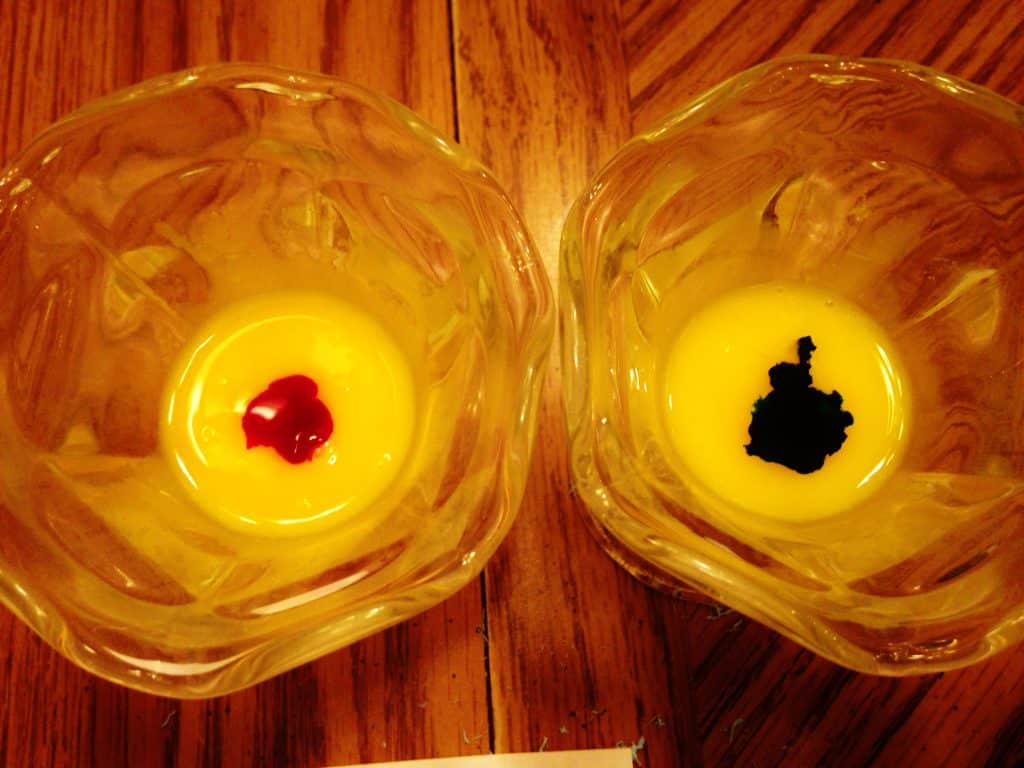
Exploring the creative world of yolk and yellow crafts is an interesting way to teach children about color recognition and artistic expression.
These hands-on activities stimulate their senses and foster fine skills and an appreciation for different textures and materials.
Creating paint from egg yolks is a simple and fun activity that introduces children to the vibrant world of yellow.
Ingredients
- Egg yolks
- Food coloring (yellow or assorted colors)
- A few drops of water (if needed)
Mixing Instructions
- Step 1: Separate the yolks from the whites and place them in small containers or cups.
- Step 2: Add a few drops of food coloring to each yolk, adjusting the amount until you achieve the desired shade of yellow.
- Step 3: If the mixture is too thick, add a few drops of water and mix until you reach a smooth, paint-like consistency.
Please provide your child brushes, paper, or canvas, and let their creativity flow as they paint with homemade yolk paint. Encourage them to experiment with different brushstrokes, mix colors, and create unique designs or patterns.
11. Yellow Collage Projects
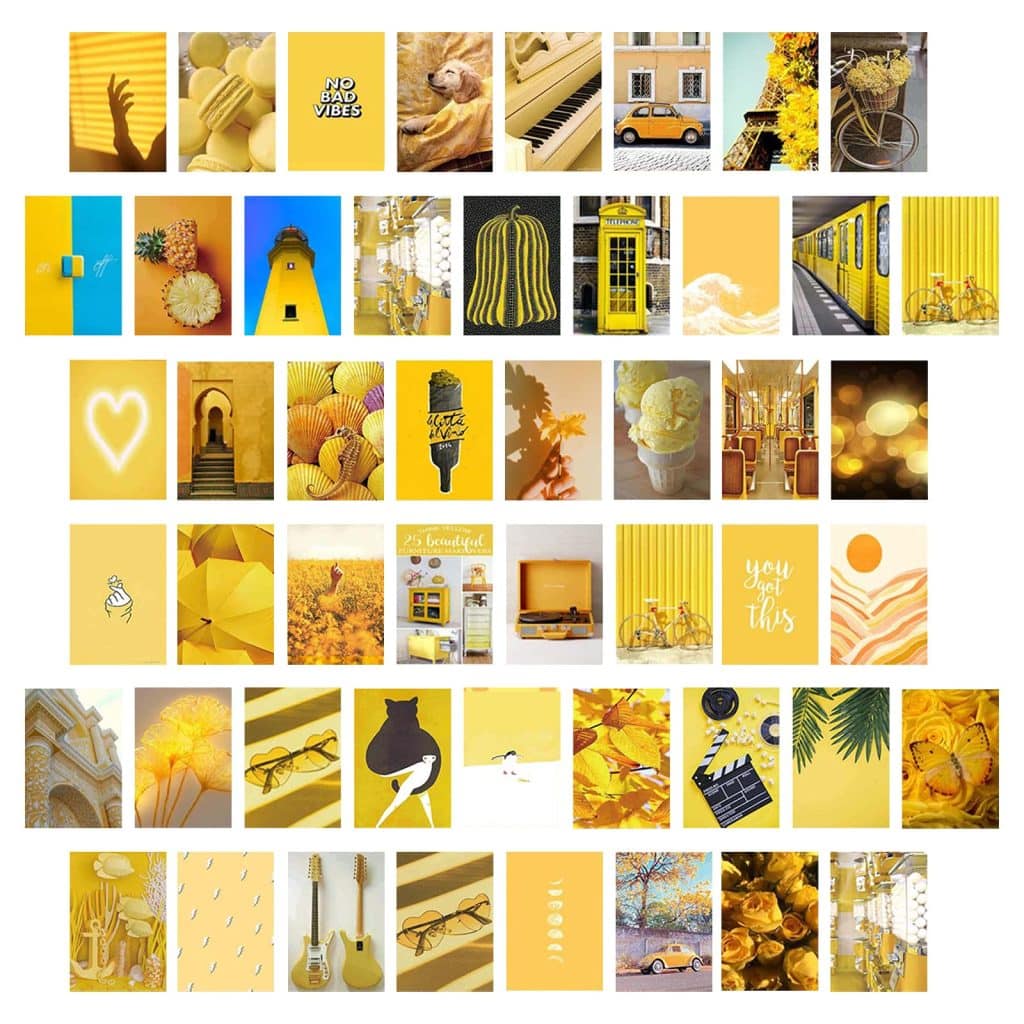
Another engaging activity is creating yellow collages. You’ll need:
- Yellow magazines or printed materials
- Construction paper or cardboard
- Scissors
- Glue or glue stick
- Markers or crayons (optional)
Instructions
- Step 1: Guide your child in carefully cutting out yellow images, patterns, or shapes from the magazines.
- Step 2: Arrange the cut-outs on paper or cardboard creatively and visually appealingly.
- Step 3: Glue the pieces down, encouraging them to explore shades and textures within the yellow spectrum.
- Step 4: If desired, they can use markers or crayons to add details or embellishments to their collage.
These yolk and yellow crafts help develop fine skills and allow children to explore color theory and artistic expression. Display their creations proudly to celebrate their achievements and foster a sense of accomplishment.
12. Yes/No Y Games
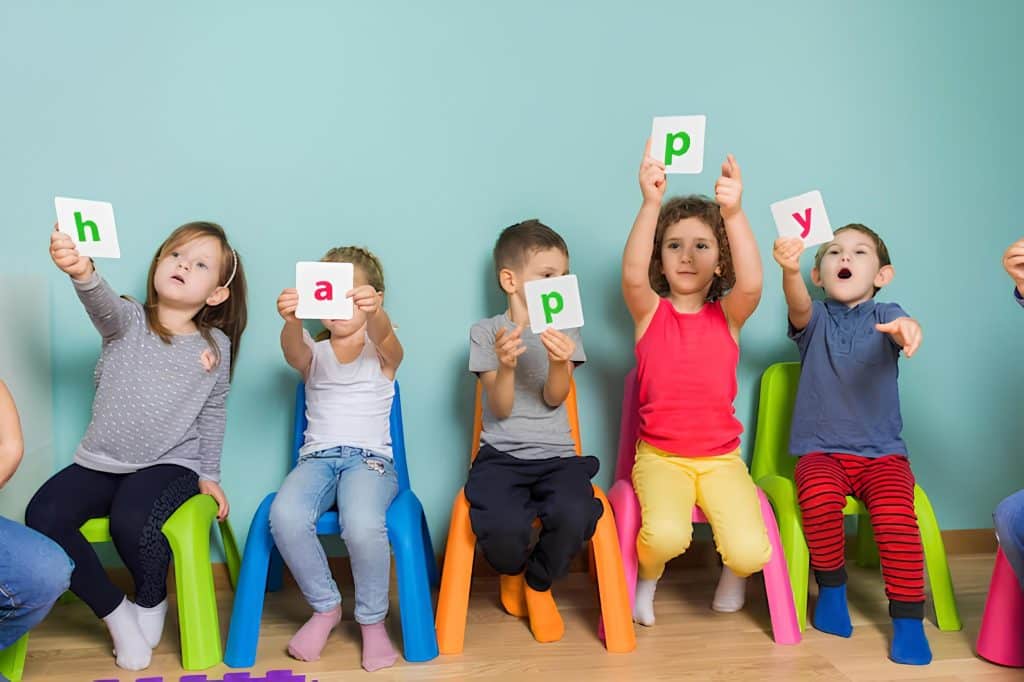
Yes/No Y games are an interesting way to increase children’s communication skills and decision-making abilities. These interactive games encourage critical thinking and promote verbal expression and active listening.
One simple Yes/No guessing game involves one person thinking of an object and the others asking yes or no questions to try and guess what it is. Here’s how it works:
Setup
- One person secretly selects an object in their mind.
- The other players take turns asking yes or no questions to narrow down the possibilities.
- Set a limit on the number of questions allowed to make the game more challenging.
Rules
- The person who knows the object can only answer with “yes” or “no” – no additional hints or explanations.
- Players must ask questions strategically to eliminate incorrect guesses and eventually identify the object.
This game encourages children to develop questioning techniques, practice logical thinking, and increase their deductive reasoning skills.
It also promotes active listening and attention, as they must remember previous answers to formulate new questions.
Wrapping Up
In summary, these fun activities, starting with Y, provide an excellent opportunity to create cherished yearly traditions with your little ones.
From crafting with yarn and yellow play dough to exploring yummy snacks and interactive games, each activity fosters learning, creativity, and precious bonding moments.
As you embark on these yearly traditions, remember to involve your children, embrace their curiosity, and let their imagination fly.
So, what’s next? Gather the materials and get started on these interesting Y activities today!
Encourage your kids to share their favorite experiences and let their input shape future traditions.



